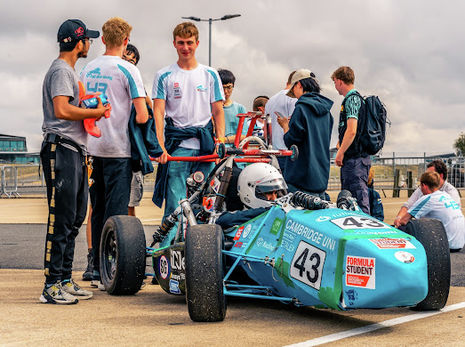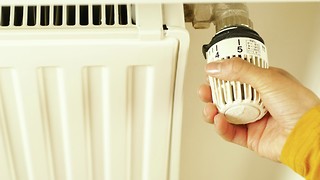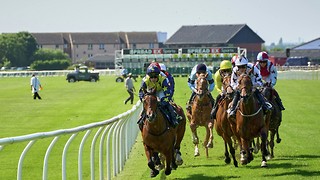Full Blue Racing: where Cambridge meets F1
Jing Hao Liang meets the Full Blue Racing team, a group of Cambridge students who build a racecar every year

As the car pulled into the pit lane at the end of an endurance event, lit up with bright blue LEDs under the Barcelona night sky, the team ran whooping and cheering towards it to celebrate a successful race. It was hard to imagine that just 2 hours earlier, the entire engine had been disassembled and reassembled as the team struggled to get it to start. They’re used to it though – frantic engineering scrambles are par for the course at Full Blue Racing (FBR), a group of Cambridge students dedicated to participating in the Formula Student competition every year.
The competition is exactly what it sounds like: universities from all over the UK (and the world, for international events) design, build, and race a car. Instead of a single race like Formula 1 the cars are tested via a series of events, such as acceleration, skid pad (cornering, or turning ability), a sprint race, and an endurance race. Previous editions have seen Full Blue Racing’s car on tracks like Silverstone and the Circuit de Catalunya.
“The cars aren’t the only thing being tested at the track”
The cars aren’t the only thing being tested at the track: designers and engineers are also subjected to questioning by the judges on everything about the car. “There are static events, which include a design event where a panel of engineers from all over the country will scrutinise you on how you made your design decisions, how you run your team and so on,” team principal Dan Logan tells me. “There’s the business challenge as well, which is about how you might put a spin on your car to make it into a business venture. For example, we proposed that our car could be a kit car that could be sold for fun.”
One of the most feared components is the cost event, says assistant technical director Nirmay Jadhav, which mimics the need to keep track of costs in “proper engineering”. “It’s a detailed list of every single part that goes on the car, including nuts and bolts and spacers. The judges come over after having read the documents you submitted, and they scrutinise you about where this or that piece is on the car, what it does, how it was made and so on. The idea is that everyone there should be able to at least give an answer that seems reasonable, which is sometimes not easy to teach.” That’s not to mention the difficulty of listing and tracking every single part when some components are reused from previous years, and many changes are made in the process of building the car.
With so many tasks and such a big operation (the team counts over 50 members), people with non-engineering skills are just as important to the proper functioning of the team. Dan claims non-engineering skills have been his main challenge and takeaway from FBR, and were his main motivation for taking up the role of team principal. “I’ve really enjoyed thinking about how we can present the team in a better way to keep new people turning up, or so that competition judges view us as more professional and competent”. Decisions like “spending money on a new banner for Freshers’ Fair and showing off the car” or designing team jerseys to make them look more “professional and competent” have been a valuable exercise in pushing the team’s comfort zone.
Another key benefit of working in the team is the sheer amount of practical, hands-on experience engineers receive. “If anything, I would have chosen to do four years of FBR over four years of the degree!” Dan laughs. “Not because I find it more enjoyable, but because I genuinely think it’s more useful in learning every skill you need in real life as an engineer. Teamwork, project management, even engineering skills that we’re supposedly taught in school like CAD (computer aided design) software are all things you properly learn to do in FBR.”
Nor does the competition stand still: in light of growing environmental concerns surrounding motorsport, Formula Student introduced a fuel efficiency test, which has led some teams including FBR to consider switching to electric vehicles. After a slightly disappointing 2025 season compared to their previous year, the team is hoping that they can adapt to the new changes and pull everything they have learned over the past few seasons together to have a great outing this year.
“FBR gives us lots of transferable skills, so maybe even something like the space industry could be an option”
With Nirmay graduating this year, I’m curious as to whether FBR has led him to commit to a future in motorsport. “That would be great, but FBR gives us lots of transferable skills, so maybe even something like the space industry could be an option,” he says. “I like anything that moves, really.”
Dan is more unequivocal, which is perhaps unsurprising as he’s previously worked as a race mechanic before Cambridge. “I’m definitely committed to motorsport. I also didn’t realise this before, but F1 is full of FBR people.”
That’s not the only benefit Dan can think of either. “To everyone considering FBR, this is a society where you’ll meet some of your best friends, drive to Spain with them, and build a car. You don’t need any motorsport interest or experience, nor do you need to be an engineer as we always need people to help run the team,” he says.
“Also,” Nirmay adds, “we race cars. What could be cooler?”
 News / Uni registers controversial new women’s society28 November 2025
News / Uni registers controversial new women’s society28 November 2025 Comment / Cambridge is woke – that’s no bad thing 28 November 2025
Comment / Cambridge is woke – that’s no bad thing 28 November 2025 News / East West Rail proposes new Cambridge East station26 November 2025
News / East West Rail proposes new Cambridge East station26 November 2025 Comment / Surely it’s time to scrap scholars’ dinners?28 November 2025
Comment / Surely it’s time to scrap scholars’ dinners?28 November 2025 News / DfE counter-terror unit contacted Cambridge over PalSoc speaker concerns28 November 2025
News / DfE counter-terror unit contacted Cambridge over PalSoc speaker concerns28 November 2025










